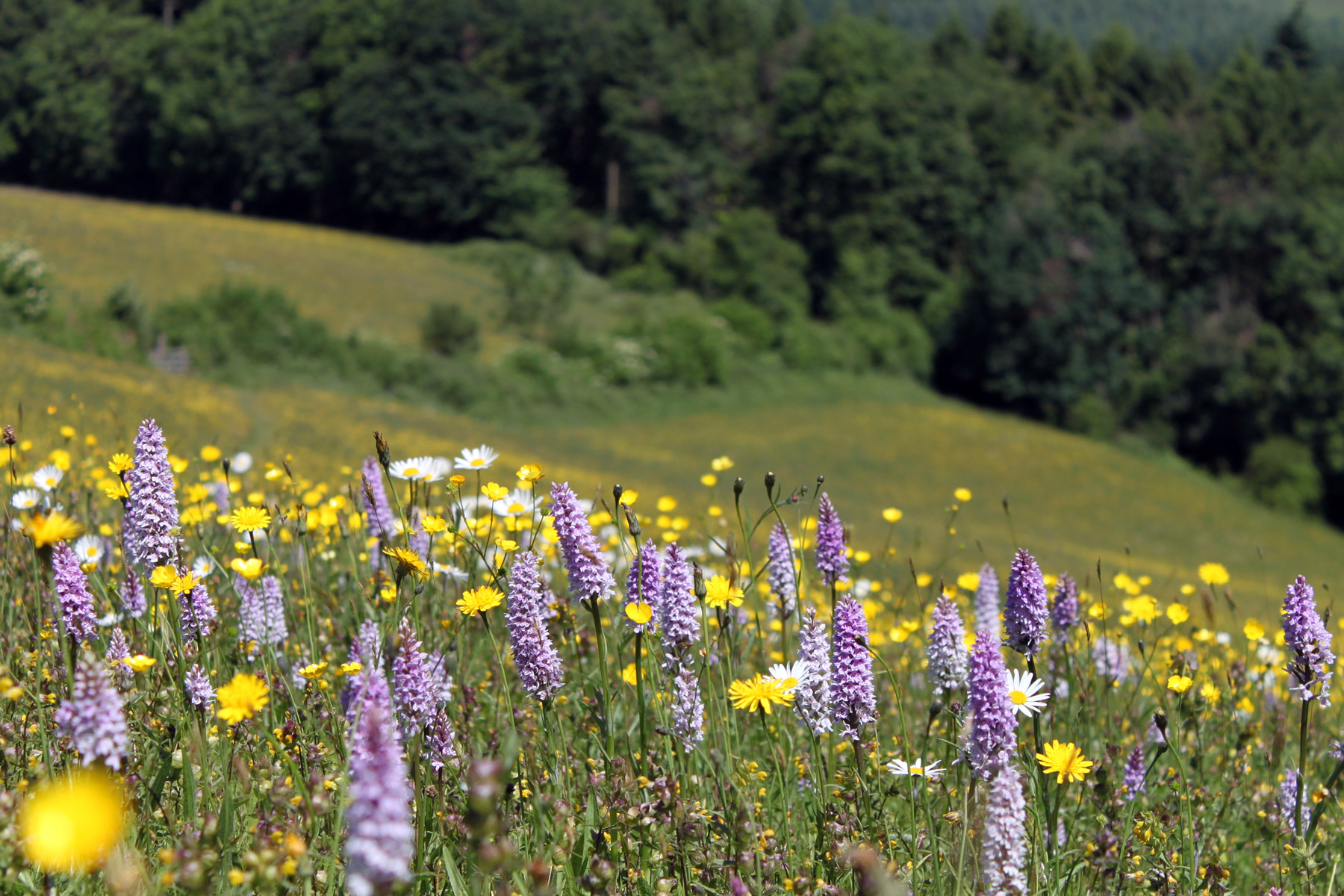Analysis of monitoring datasets 2019-2023
Over the last 5 years Herefordshire Meadows has been encouraging and assisting landowners to monitor the progress of their meadow restoration projects, via yearly botanical surveys, beginning with a baseline survey pre-restoration.
The simple Rapid Assessment Monitoring method is used, where species are recoded at regular stops whilst walking a zig-zag route through the restoration area, using the Field Sheet for Rapid monitoring. To promote consistency across the data that is gathered, Herefordshire Meadows run annual workshops to train landowners in this method, as well as providing a short Rapid Assessment Monitoring training video on the HM website.

Stuart Hedley leading a training session for 2023 restoration site owners at the Leen Farm, Pembridge
The training workshops are led by County Botanical Recorder Stuart Hedley, who has been collating the data gathered from these surveys to analyse and report on the results. Results gained from Stuart’s analysis of the data have been very encouraging, and below is an overview of the most recent findings.
Our most recent restoration sites restored as part of the Botanica project show a marked increase in total species-richness from a pre-restoration baseline average of 4.23 species per metre², to an average 5.85 sp/m² 1 year post-treatment. Even more positive results were observed when looking only at the subset of key species particularly indicative of old grasslands (e.g. Cowslip and Yellow rattle), where the pre-restoration average of 2.36 sp/m² had risen to 3.93 sp/m².
Looking further back into the dataset, sites restored in 2019 as part of the Coronation Meadows project showed impressive improvements 4 years post-treatment – with species richness almost doubling, and an almost threefold increase in those species of greatest conservation significance.
The site which showed the most improvement had increased from a 2019 baseline of 0.9 positive indicator sp/m² to an impressive 9.3s/m² by 2023. Given that old grasslands on typical soils of Herefordshire attain broad-leaved herb totals between 12-17 indicators, this result 4 years post-treatment is very encouraging, and bodes well for our more recent Botanica project restoration sites.
Surprisingly, 12% of sites in the Botanica and Coronation Meadows projects showed species richness declining slightly from one year to the next, though the dip was not sustained for more than one year. Also, these dips were not observed at all for the key indicator species – which grew year on year. This interesting finding might indicate that the restoration process brings about a decrease in more generalist species, such as annual weeds, whilst boosting the important positive indicator species. This conclusion reinforces the message that overall species richness may be less important than that of the desired indicators highlighted in bold on the survey sheet.
Both the Coronation Meadows and the Botanica project restoration sites showed more gains in the positive indicator species than in total species diversity, showing that the restoration techniques being used are indeed favouring the desirable species we seek as soon as a year following sowing.

1 stop of 10 in a Rapid Monitoring survey of a restoration meadow, where broad-leaved plants in a metre square quadrat are identified and recorded.
In conclusion the data shows that Herefordshire Meadows are successfully setting many areas of formerly impoverished habitat on the road to becoming permanent, species-rich grassland. The involvement of many different individuals in the process, all committed to a vision of a more nature-rich county, is an extremely positive asset at a time when professional and public sector assistance is thin on the ground.
Thank you from Herefordshire Meadows to all the landowners who contributed to this important dataset. We continue to encourage all landowners to monitor their restoration sites using this technique, as the more who take part, the more powerful the dataset becomes – and the more useful it is to guide our future meadow restoration work.
All please note that we have updated survey sheets for 2024! – read more HERE
